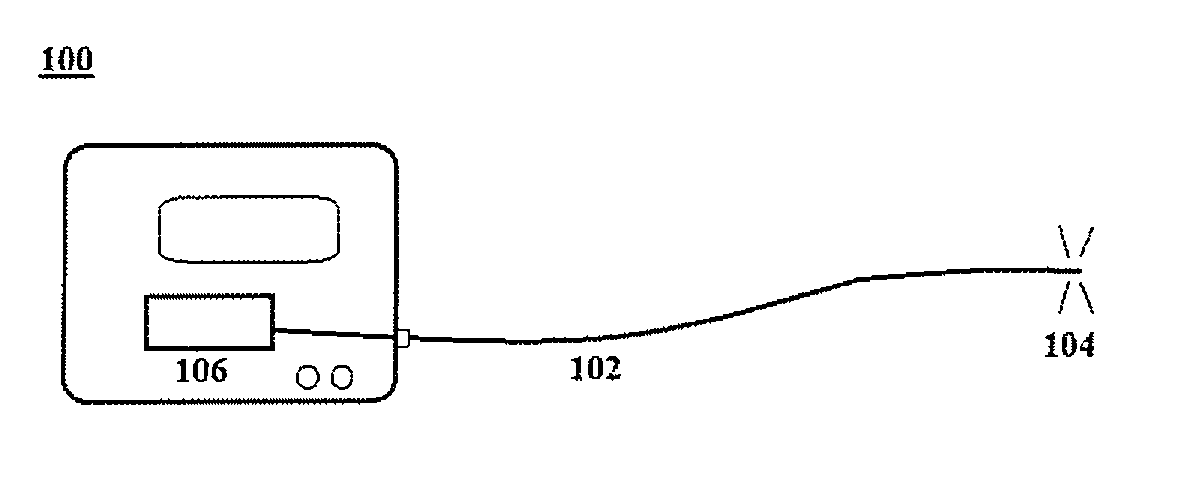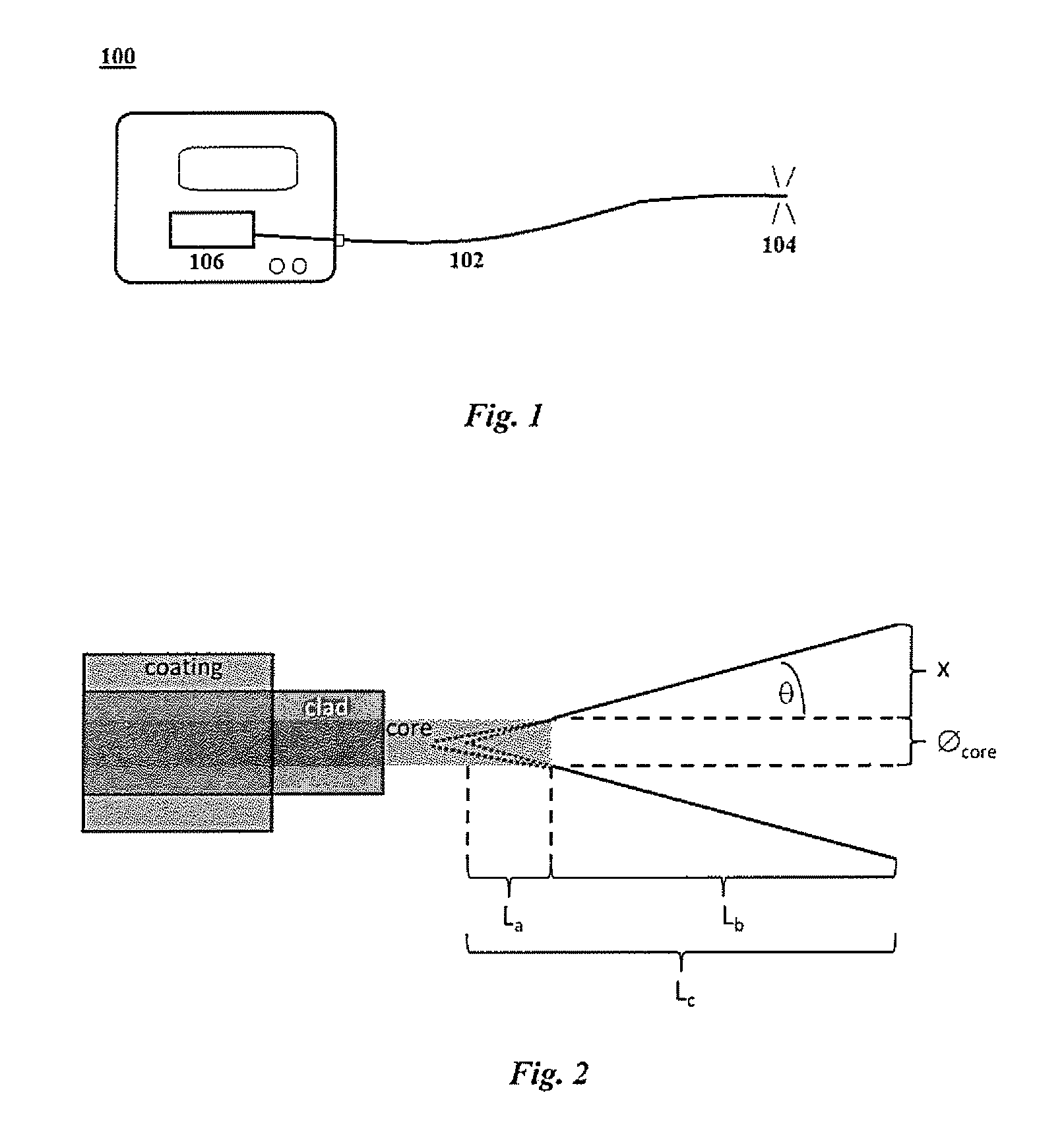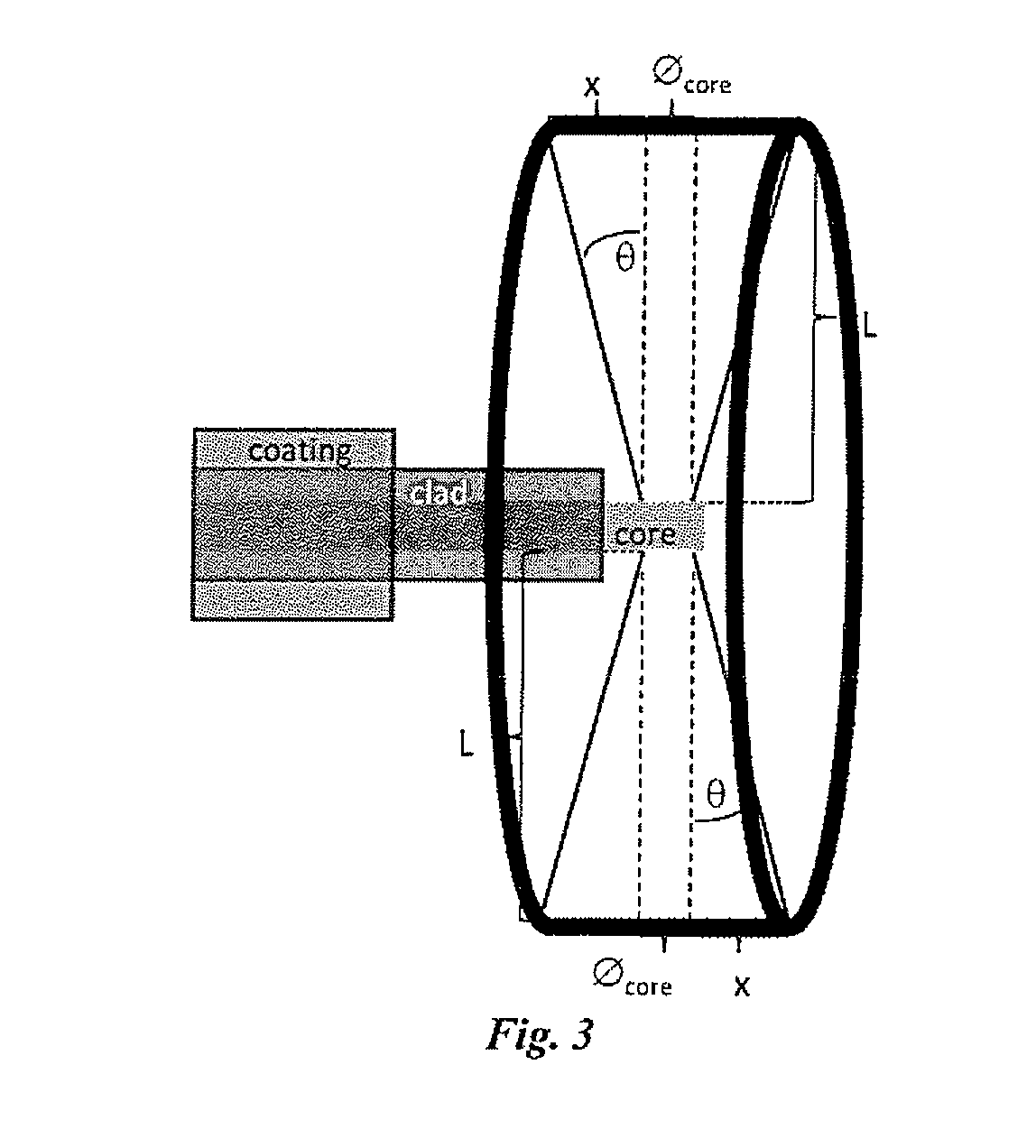Lasers are potentially hazardous because they can burn the
retina of the eye, the
cornea of the eye or even the
skin.
Photoreceptor cells in the eye's
retina can be damaged by an increase of just 10 degrees Celsius.
With a powerful enough laser, permanent damage can occur almost instantly.
Infrared lasers with an emission
wavelength in spectral region from 700 nm to 1400 nm are particularly hazardous, as the body's protective blink
reflex response is not triggered by invisible light.
Additionally, laser pulses shorter than about 1 μs can cause a
rapid rise in temperature, resulting in explosive boiling of water.
The resulting
shock wave can subsequently cause damage relatively far away from the point of
impact.
Ultrashort pulses can also exhibit self-focusing in the transparent parts of the eye, leading to an increase of the damage potential in comparison to longer pulses with the same energy.
Mentioned safety elements still present limitations and drawbacks or may be insufficient under some conditions.
The resulting disturbed color impression is perceived by physicians as annoying.
However, the incident laser beam is reflected in an uncontrollable way and might endanger other persons.
Finally, the costs of wavelength-specific goggles are significant and are not always easily acquired in many local markets.
Otherwise improper
safety goggles may be selected and used mistakenly.
Therefore, if someone walks into the
treatment room while laser is being emitted, the
interlock system shuts off laser power, because the door
interlock is not able to differentiate between persons who enter the
treatment room with laser protection goggles on and those who do not wear them.
As a consequence, the treatment could be unnecessarily interrupted at an uncontrollable, disadvantageous and even dangerous moment.
The interruption / disturbance of a
medical treatment might cause severe problems to the patient or could damage the success of the treatment.
Keylock systems do not allow
radiation emission if enabling key is not inserted in place.
Keys for keylock systems are often lost or misplaced and can easily be dented such that they no longer fit in lock, thus preventing treatments until replacement keys can obtained.
However, foot switches or hand switches are often not desired because it is considered distracting for physicians to be required to maintain
constant pressure on the switch throughout the procedure.
Often such acoustic signals are annoying / distracting, especially when physicians carry out delicate and potentially dangerous treatments.
Emergency buttons can easily be pressed by accident.
At times lasers cannot be used or treatment is delayed because such emergency buttons are inadvertently in the pressed position.
This represents an increase in
treatment costs and requires careful and extensive management of human resources.
However, the danger of a
fiber accidentally and inadvertently
coming out of vessel while laser energy is being applied exists.
These and other related inventions present limitations.
Furthermore, Weckwerth's invention would be difficult to adapt to treatment of different types of human tissue.
Therefore, a mechanism, that deactivates the laser when its beam hits human tissue, will not be helpful.
For example, deep-
ultraviolet light causes accumulating damage, even at very low powers.
Especially collimated
laser beams of visible and near-
infrared light can be dangerous at relatively low powers because the lens focuses the light onto a tiny spot on the retina.
Mentioned safety measures described in prior art are still not enough to be considered Class 1 devices.
This is because a failure of any kind in such measures would not prevent a
potential accident in which someone's eye is exposed to laser radiation.
Secondly the overall emitted laser power is limited in dependence on the length of the connected diffuser.
Once again, mentioned device is limited in that it is applicable to a restricted
small range of dermatologic treatments.
 Login to View More
Login to View More  Login to View More
Login to View More 


